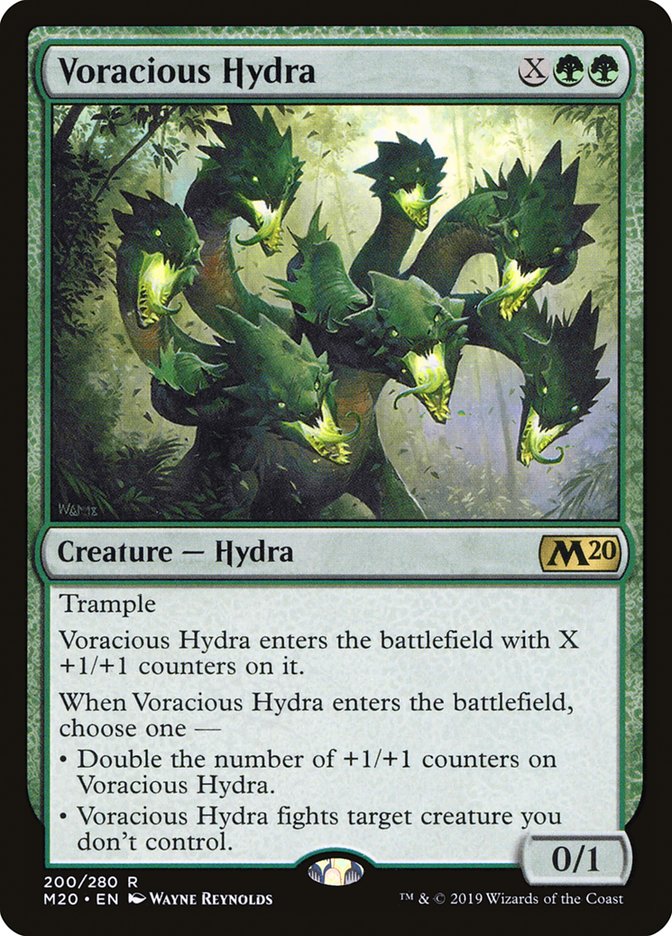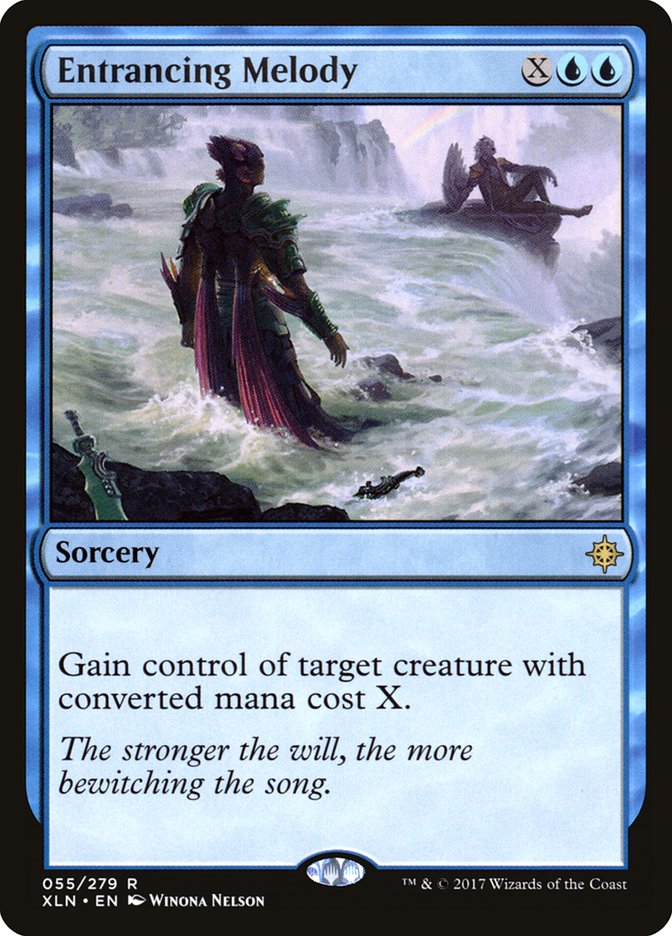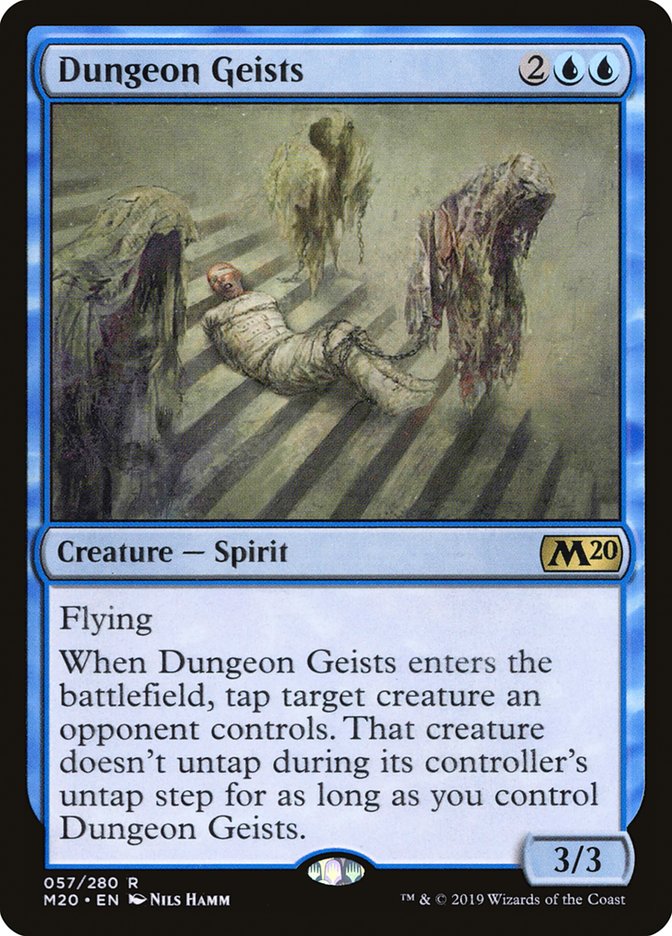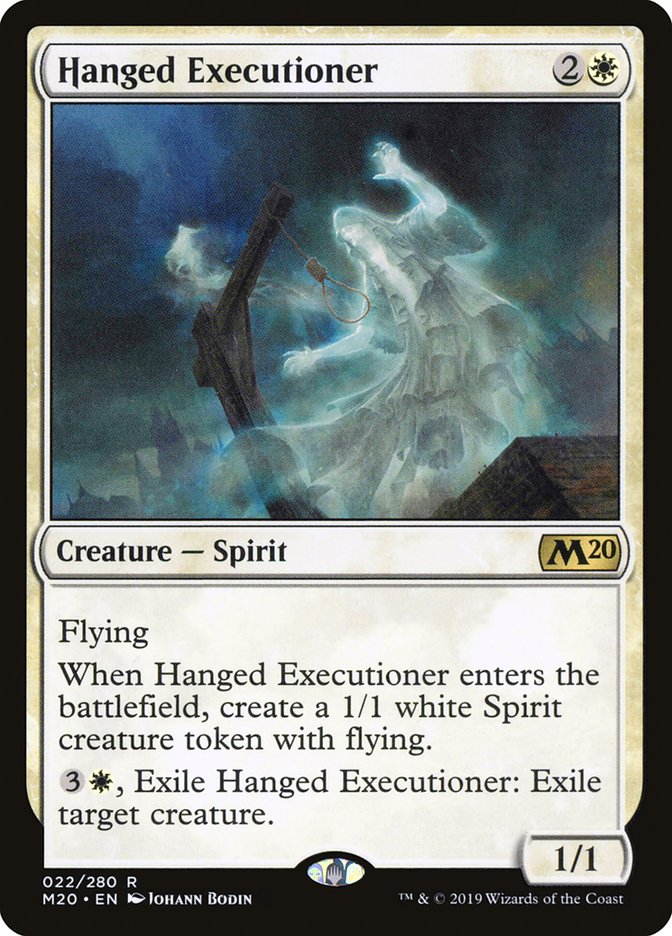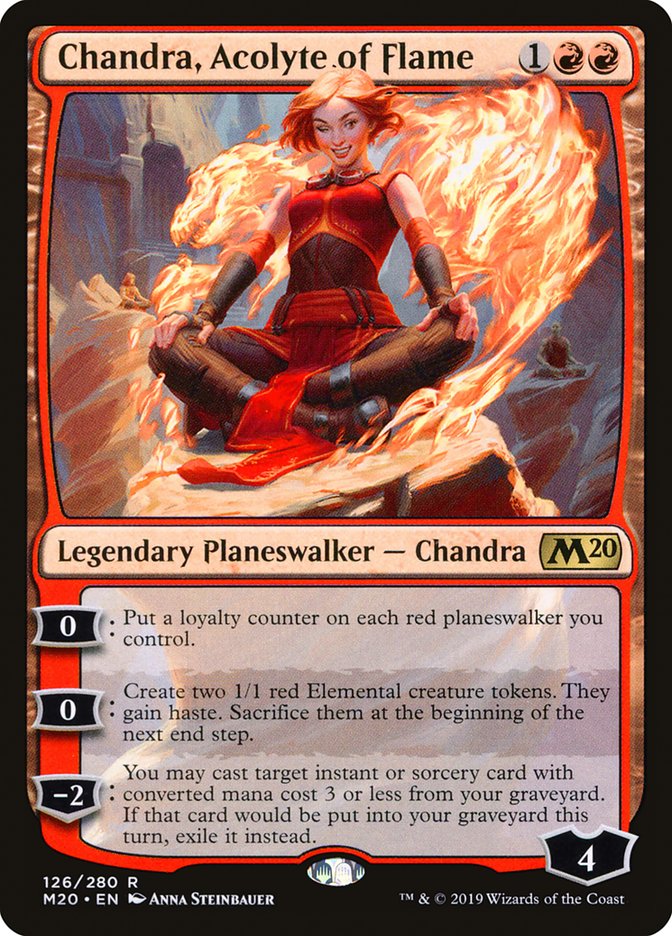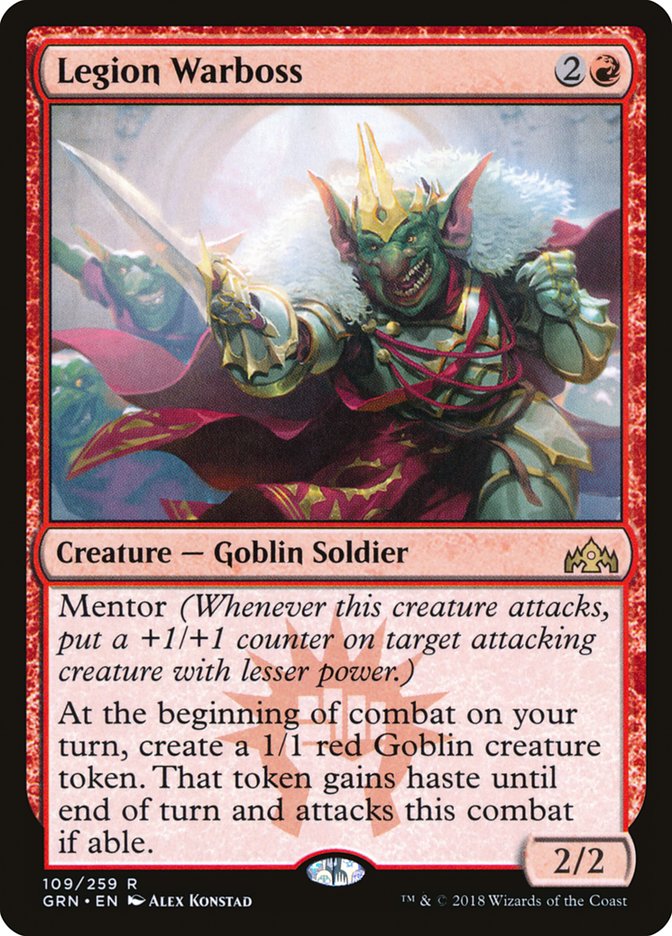Core Set 2020 Standard has arrived, and not with the whimper that has been typical to core sets past. Elementals has risen from out of the blue and previously underachieving clans Vampires and Dinosaurs have been given additional life.
New archetypes and most existing decks having potential additions initially left me at a loss for where to start. With SCG Worcester this weekend, I’d like to talk about the three decks that I’d consider playing due to the new cards that Core Set 2020 has brought along with it.
The first deck I’d like to talk about is Simic Ramp:
Creatures (24)
- 4 Llanowar Elves
- 4 Jadelight Ranger
- 4 Hydroid Krasis
- 4 Incubation Druid
- 4 Paradise Druid
- 4 Voracious Hydra
Planeswalkers (6)
Lands (25)
Spells (5)

Ramp decks, both Bant and Simic, were players throughout War of the Spark Standard but never quite reached the forefront of the format. Being weak to blistering starts from Mono-Red and susceptible to sweepers that rose in popularity proved to leave the strategy too exploitable. Core Set 2020 brings what I believe to be a game-changer against aggro in Voracious Hydra.
What does this card do? To be frank, a little bit of everything. In some situations, you will deploy it on Turn 3 to snipe down a Runaway Steam-Kin; other times, simply spending four mana to make a 4/5 is all you need to stabilize the battlefield as you progress up the curve. In their prior form, ramp decks had been sorely lacking in bridge cards. Voracious Hydra serves as a stopgap when your mana accelerants are interacted with while also being a payoff when untapping with six or more mana sources does finally happen.
With the stock of aggressive Vampire decks on the rise, Entrancing Melody is again lining up nicely as a reactive piece. Knight of the Ebon Legion and Adanto Vanguard are not cards that can be blocked consistently, so being able to steal threats for a price cheaper than what Mass Manipulation offers is crucial to get to the late game.
There is a potential version of this strategy that cuts Jadelight Ranger and Incubation Druid for Risen Reef and Leafkin Druid. And while Reef offers potential advantage that is difficult to match, losing mana accelerants that tap for blue makes Mass Manipulation almost too ambitious with the manabase as constructed. Jadelight Ranger also has the advantage of carrying more stats unto the battlefield, allowing you to play better defense and pressure opposing planeswalkers.
While traditional ramp only gained a few extra tools, my next consideration is a deck that simply didn’t exist before Core Set 2020:
Creatures (24)
- 4 Dungeon Geists
- 4 Remorseful Cleric
- 4 Supreme Phantom
- 4 Empyrean Eagle
- 4 Hanged Executioner
- 4 Spectral Sailor
Lands (22)
Spells (14)
Sideboard

While I normally am not a fan of playing synergy decks in eight-set Standard formats due to the raw power of other options available, I think Spirits can be the exception. While we are mostly playing a classic tribal deck here with a pile of creatures and twelve Anthems to make all our threats meaningful, the biggest draw for this variant of Azorius is just how meaningful evasion is right now. Risen Reef variants tend to be low on interaction have a difficult time stopping themselves from getting run over outside of Cavalier of Thorns.
Dungeon Geists and Hanged Executioner are worth highlighting. If Azorius Spirits was only a stack of evasive stats, I believe it would fall short of expectations, but when you have eight disruptive creatures, it makes racing much more viable. While Dungeon Geists is vulnerable, the presence of all your pump effects makes tagging the four-drop with burn quite difficult. Hanged Executioner doesn’t have to be a removal spell to be good, either, as producing two Spirits regularly is worth six or more combined power and toughness.
Nailing down a sideboard is particularly difficult for this deck and is part of the reason I’m hesitant to play it immediately out of the gate. Over-sideboarding is the main issue, as cutting too many creatures can water down your primary strategy and will do more harm than good. I’d like to experiment more with different grindy options like Dovin, Grand Arbiter and Ajani, Adversary of Tyrants to help combat decks attacking you by overloading on spot removal.
While this may never be a strategy that dominates, I’ve learned a couple of things from playing it. First, Spectral Sailor is quite a bit more powerful than face value would say, as Autumn Burchett also spoke on earlier this week in their article about Mono-Blue Aggro. The second is that I’d expect some deck using the combo of Unsummon and Spell Pierce to end up being a real contender, and we’ve also seen these starting to crop up in a Simic Flash deck that has been seeing more play recently.
The final deck I’d like to discuss today is something you’re likely quite familiar with, Mono-Red Aggro:
Creatures (20)
- 4 Fanatical Firebrand
- 4 Ghitu Lavarunner
- 4 Goblin Chainwhirler
- 4 Viashino Pyromancer
- 4 Runaway Steam-Kin
Planeswalkers (1)
Lands (20)
- 20 Mountain
Spells (19)

While the point has likely been beaten into the ground by this point, I’ll say it again – the first week of a new Standard format is the time to play aggro. When you have a tuned, tried-and-true list like Mono-Red that’s perfectly capable of beating all of the brews that people will come to contend with, it’s hard to go wrong. It’s not even as if the deck didn’t get any new cards!
Chandra, Acolyte of Flame has a strong chance of being better than Legion Warboss. There are a few reasons for this, but primarily it lies in how well the three-cost planeswalker slots in when you choose to assume the role of a control deck. With the large quantities of removal you can fit in your 75, Mono-Red has the tools to keep the battlefield clear leading up to casting Chandra. Once that happens, the planeswalker is able to preemptively check your opponent’s next threat, and should that not come immediately, you’re still able to get useful chip damage. While Legion Warboss presents a quicker kill in the absence of interaction, that doesn’t seem to be of much importance unless a deck like Simic Nexus again becomes a force.
These are just a few of the many options that Core Set 2020 Standard is likely to represent. I’d expect the format to cycle with regularity and I’m beyond excited to see what this first weekend reveals to be the early contenders.


